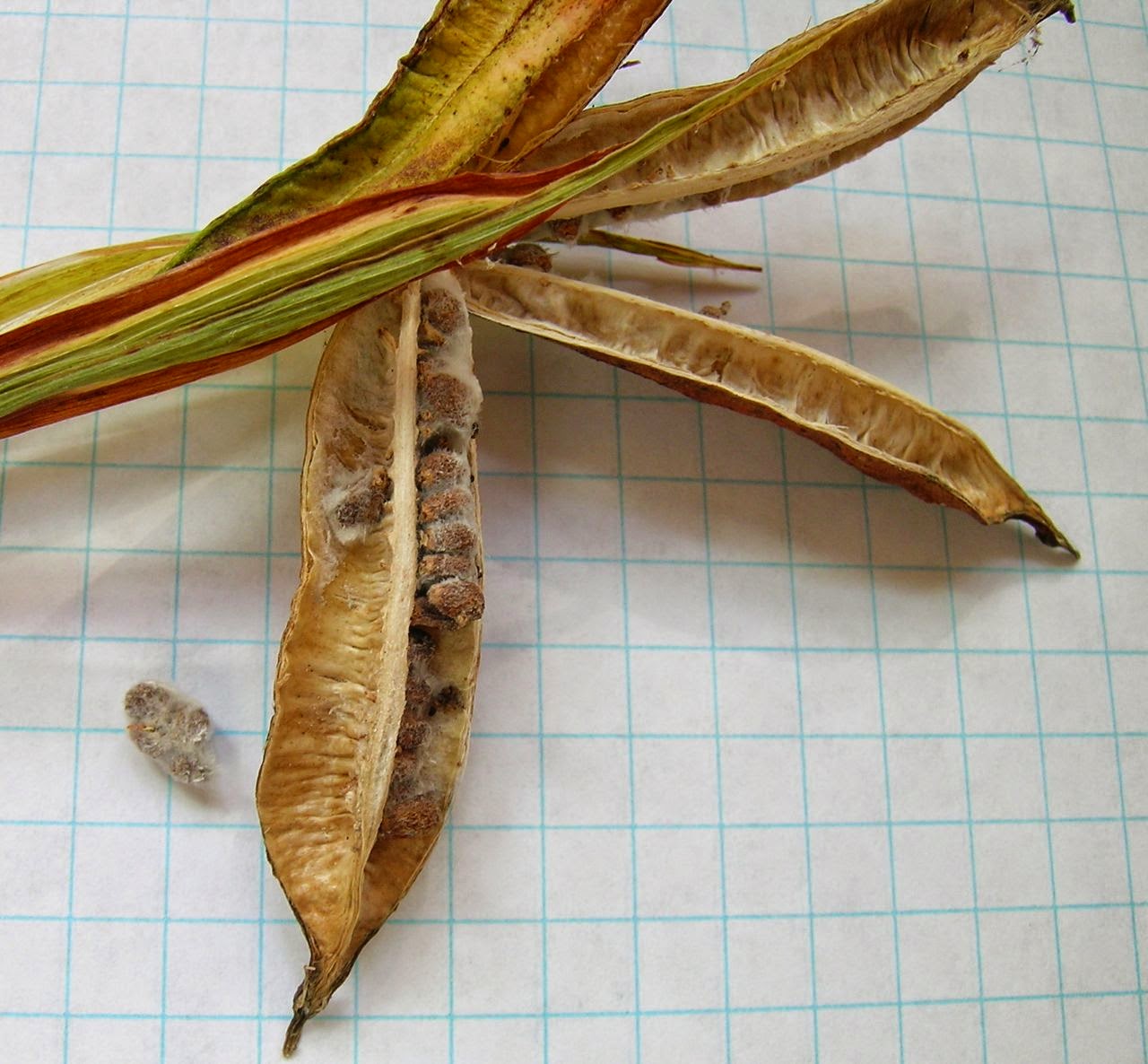Kathleen Sayce
When I first collected Pacifica iris seeds, I learned the hard way to let them dry thoroughly before packing seeds into envelopes. Several packages of fresh seeds developed mold!
Seeds need ten days to two weeks of patient drying time from pod to package. Gardening is not only a creative physical and visual practice, it's a constant practice of patience––and a lesson I keep returning to again and again, apparently I'm a slow learner when it comes to patience.
 |
| Ripe Pacifica Iris pod with moldy seeds, right from the garden. This whitish mold is in the seed coat, not the seed. The seeds will germinate despite the mold. |
I quickly learned that no matter how dry the pod, the seeds needed their own drying time once they were decanted. The following images show the transition from fresh, damp seeds to dry seeds that can be packaged safely.
 |
| Fresh seeds, right out of the pod: Smooth and light colored, these seeds need to dry for a couple of weeks. |
 |
| Partially dry, these seeds are starting to darken. |
 |
| Finally dry enough to package and send off in the mail to a seed exchange. |
Thoroughly dry seeds are light, feel dry to the touch, and are medium brown to dark brown to black in color. The seeds in the photo above are dry enough to put in envelopes and store, or mail to a seed exchange.
 |
| These are extra pods. Note the brown pod at top with loose ripe seeds above it. |
Nowadays I count pods and rarely collect more than 10 pods of any one variety, which will give more than 120 seeds. On the low end, I aim for at least 2 pods, or 20-30 seeds, as a minimum donation of one variety, unless it's something I know only a few people will want. I have one pod coming on a rare iris and will share seeds directly with those who want it, if I get more than 10 seeds from that single pod.
If you save seeds for seed exchanges, think about how many seeds to send in. Seed chairs typically want to send out at least 5 seeds of each variety, and if they get only 10 seeds of anything, then only two orders can be filled.
These days, I clip off extra seed pods and compost them, or toss the seeds out in a rough meadow. Someday I may have a mixed meadow of grasses and irises in that part of my garden. I also toss them on the lawn by the iris beds, the seeds in the photo above may germinate where they fell.
Seeds are a promise of plants to come. Every time I collect seeds, plant them, and grow new plants, it feels like a blessing from nature. When those new plants bloom and set seed in turn, it's the great wheel of life turning in my own garden, year after year.